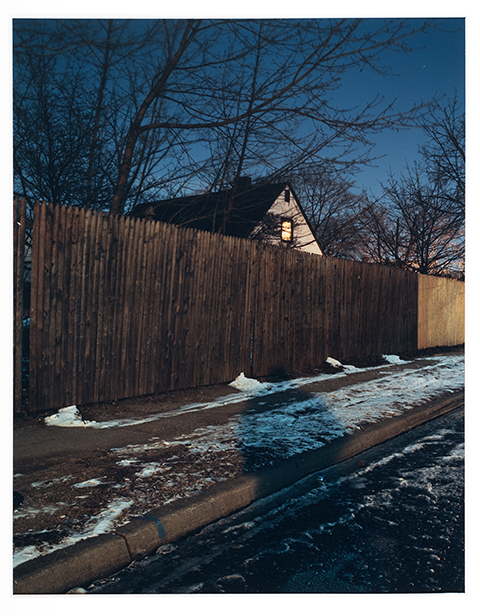
Keywords: Anthropocene, Modernity
Todd Hido (American, b. 1968)
Untitled #2368 (Levittown, NY) (2000)
Chromogenic print, 15 x 12”
Museum Purchase, 2002.31
Hido began taking photographs of houses at night in the San Francisco suburbs but the series eventually took him to neighborhoods across the U.S. He made this photograph in Levittown, a planned community established in 1947 on Long Island that set the standard for modern suburbia. The development featured affordable single-family mass-produced homes built at a rate of thirty per day. Levittown allowed thousands of Americans to become homeowners, though the community’s homogeneity has long been criticized. This quality was not just architectural – Levittown and other suburbs initially discriminated against non-white residents.
Dark Edges
Dark. High. Solid. Maintained. The edge of light at twilight meets the edge of property at the street. Asphalt, concrete, and weathered wood dominate this bleak scene. Though the fence protects the property behind it, it cuts off its owners from the rest of society, an aloneness signified by the single lit window in the darkness of pre-dawn twilight. Anthropocene urban life is often private life lacking the open, tribal, fluid family boundaries that dominated the previous Holocene and Pleistocene Epochs.